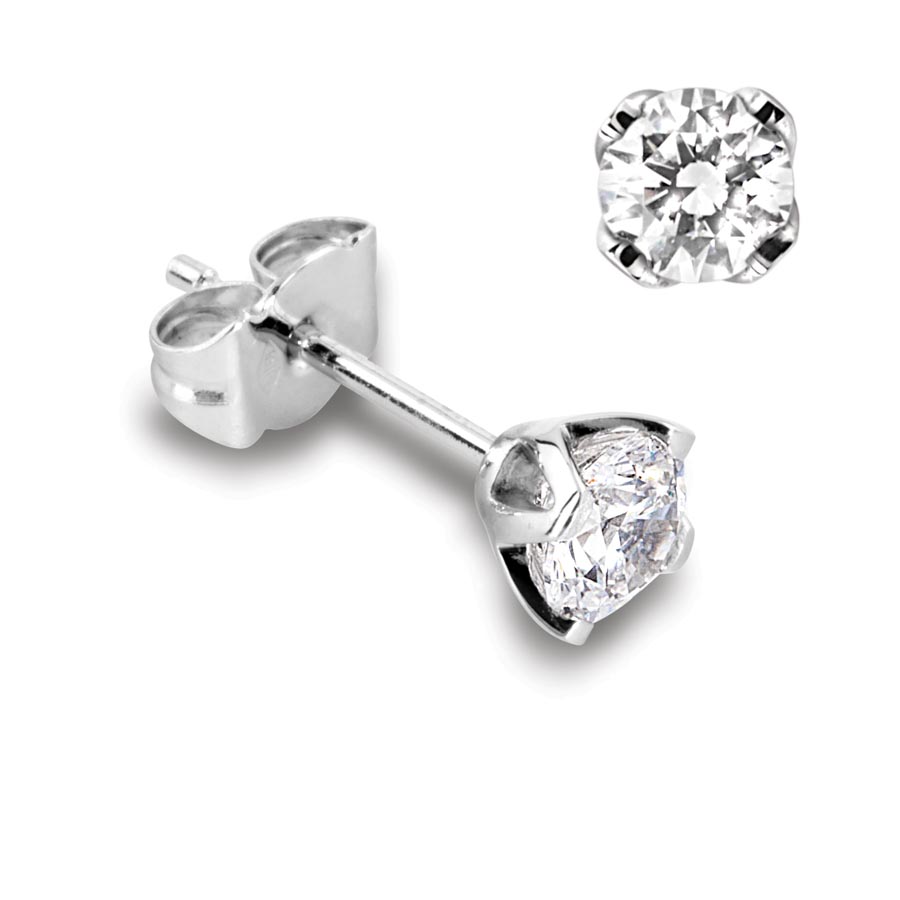Carat weight may seem like one of the most straight forward 4Cs however there is a lot more to carat weight than meets the eye! Here we cover the most important facts about carat weight and dispel a few myths too.
What is Carat weight?
In short, carat is the unit of measurement for the physical weight of diamonds.
Diamonds are weighed in carats as per the international unit of measurement for gem weight. One carat equals 1/5 of a gram (0.20 g). A carat is divided into 100 points and you may often hear jewellers refer to diamonds in points. A 0.50ct diamond is often called a 50 pointer and a 0.75ct diamond; a 75 pointer. A 1ct diamond however is always a 1 carat diamond!
Carat Weight Myths:
Myth no 1.
A 1ct diamond costs exactly twice as much as a 0.50ct diamond!
It is a common misperception that the increase in value is proportionate to the size increase.
The price of diamonds is calculated by multiplying the carat weight by the price per carat and a 0.50ct diamond will have a significantly lower price per carat than a 1ct diamond.
Large diamonds are rare and the rarer the diamond, the more valuable it becomes. This is the reason why you can expect to pay exponentially more for a large diamond.
Myth no. 2.
Carat weight and total carat weight mean the same thing!
Carat weight refers to the weight of a single stone, whereas total carat weight / tcw refers to the sum of all diamonds in an item of jewellery such as an engagement ring. A halo ring with a 1ct centre diamond and 0.50ct of side diamonds will have a total carat weight of 1.50tcw. This ring will cost significantly less than a single solitaire ring with a 1.50ct centre diamond. Always remember that the chief driver for price will be the central diamond or the biggest diamond in a piece of jewellery.
Myth no. 3.
The bigger the carat weight the better!
Well this is subjective of course as sometimes only a huge rock will do, however the general advice is to compromise carat weight before quality. A bigger diamond may not always mean a better diamond.
Myth no. 4.
Carat weight and size are the same thing!
It is easy to imagine that all 1ct diamonds will look the same size, however there can be variations in their measurements. A 1ct diamond that is very deep will look visually smaller than a shallow cut 1ct equivalent. The measurements are directly tied into the cut of a diamond. It is wise to always inspect the cut grade and measurements to ensure that you are getting a well cut diamond that spreads correctly for it’s size.
More Tips!
- Diamond prices jump at full sizes. A 1ct diamond is often referred to as a ‘magic size’.
A 0.97ct diamond may visually look indistinguishable from a 1ct diamond however it will cost a lot less. This is because you have now jumped a price bracket and the price per carat weight increases greatly. It is also for this reason that diamonds weighing just under 1ct are more rare however when they can be found, they typically represent great value for money.
- Just as no two diamonds are the same, neither are fingers! A 1ct diamond will look much bigger on a smaller hand than a larger hand. Make sure that the size suits your finger. There may be no need to pay a lot more if you can easily carry off a smaller diamond.
- If you really want a big rock but your budget is more suited to a smaller diamond, consider looking for larger diamonds in I or J colour with SI1 or SI2 clarity grades.
- If you are comparing two diamonds that look the same on paper however are priced very differently, always get a professional opinion to make sure that you are comparing like with like. With diamonds there is always a reason for a price difference and the old adage ‘if it sounds too good to be true, it probably is’, often rings true.






